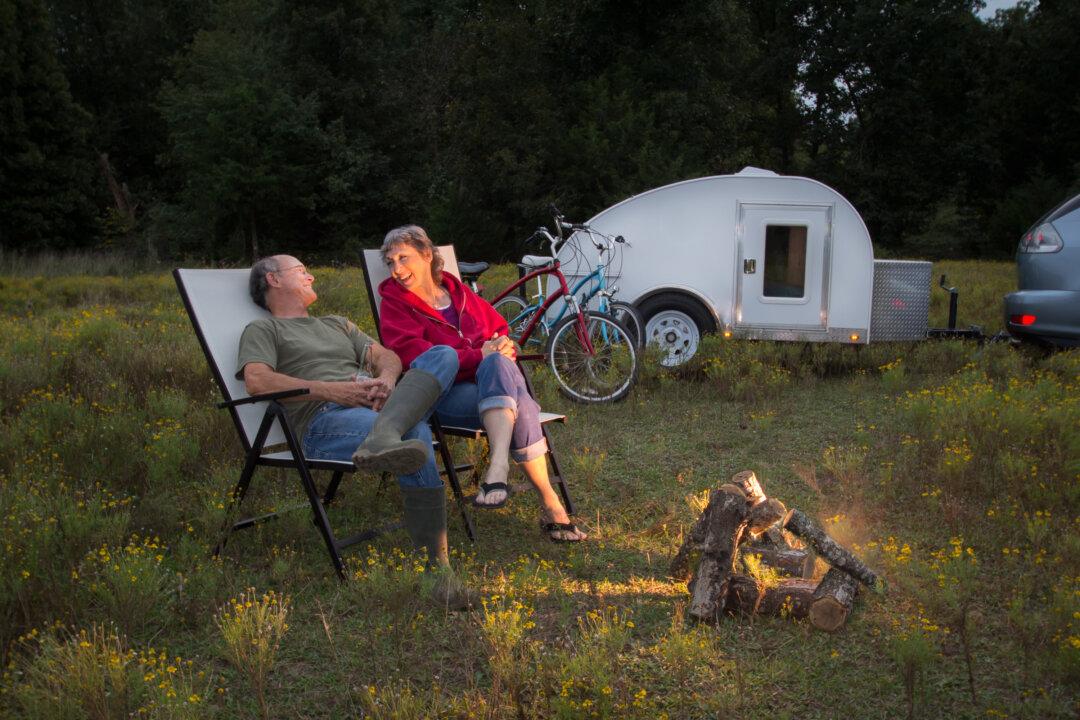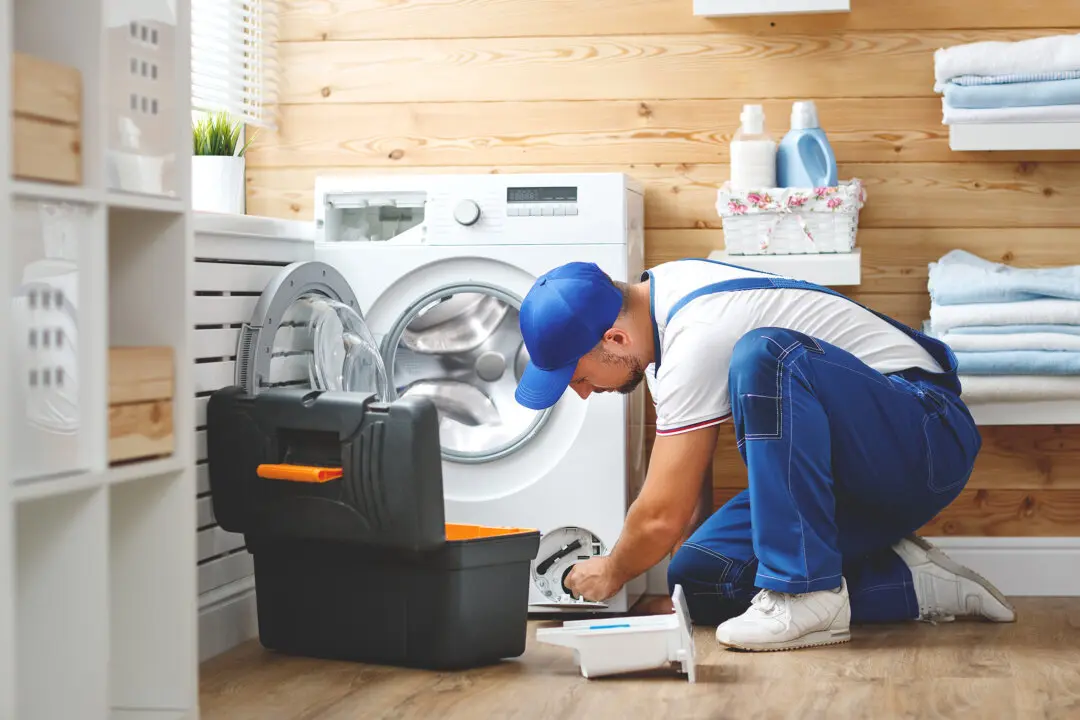Los Angeles—It’s a common refrain I grumble to my husband: Why is quality outdoor gear so expensive? His response: Stop complaining and find a solution.
He’s right. We’re REI Co-op members—a $30 lifetime membership you pay only once (and one that keeps giving, with regular sales and coupons mailed to us). I firmly support the company’s mission of outdoor conservation, and I get excited every time there’s a sale. During the most recent, I took advantage of the 20 percent off coupon (typically members are offered four 20 percent off coupons a year) to snag a teal Outdoor Afro + REI Co-op fleece I’d been lusting after and now wear every day. I’m a big fan of the quality. I got my Co-op Cycles mountain bike there too.
But sometimes I get serious sticker shock just checking out a pair of climbing shoes or binoculars, a sleeping bag or a tent—it’s why we mostly shop the sales. Everything seems to cost $100 and up. Even with L.A.’s minimum wage going up to $16.78 per hour in July, that’s at least six hours of work for a pair of binoculars.
As someone who grew up without fancy stuff, I always notice how the parking lot of the REI nearest to us is full of higher-end Subarus, Jeeps and Mercedes-Benzes. Spending time outdoors already requires time privilege; the fact that high-quality outdoor gear can be so expensive seems like an additional tax on lower-income folks who want to participate.
It’s true you can get stuff for much cheaper through online outdoor distributors or at spots like the Columbia Factory Store. You don’t have to go designer when it comes to anything outdoors. My parents used the same ’80s Coleman cooler for fishing and camping for decades, and I frequently pick up outdoor gear at thrift shops (my ski jacket is a thrifted $5 Columbia jacket with a torn pocket I proudly repaired). I have friends who climb in cheap jeans, hike in old sweatpants and ski wearing ratty gloves.
But getting a really great tent, or a top-of-the-line rain jacket with a protective hood and pit zips for long, sweaty hikes, can run you in the hundreds. I learned I needed better gear when I took my mom’s (supposedly) water-resistant rain jacket from the ’90s on a seven-hour kayaking trip to British Columbia’s Discovery Islands. After kayaking in the rain for several hours, I was soaked to the bone and freezing cold, wishing I’d splurged on a better jacket.
Not only that, I’ve realized I do want to look good and feel comfortable while running, hiking and camping. My most flattering Oya yoga pants (which have an NSFW name) and my super-supportive Janji sports bra—both of which I want to wear every day—aren’t $20, but they’re quality-made, and their cost per wear makes them well worth the initial outlay. In L.A., athleisure and hiking gear are everyday wear, and sometimes even workwear, so it’s extra important to have some reliable pieces that make you feel good. That craving for a hike could strike at any time, after all.
Here are a few tips for saving cash on outdoor gear.
1. Borrow Gear for Free
There are so many ways to borrow gear without spending a cent, including checking out a donated REI pack (it contains binoculars, California tree and wildflower guides, California wildlife guides, a hand lens, a compass and more) at your local library, or reaching out to lending libraries and organizations that help low-income or first-time campers. Ask to borrow gear from your friends and neighbors on Instagram and Nextdoor; seek out and join Facebook groups like Buy Nothing, which allow neighbors to give their used goods to someone else who might want them; borrow car and bike repair tools from the L.A. County Library Tool Lending Library. And climbers of color can reach out to Lagartijas Climbing Crú to borrow crash pads and other gear.
2. Keep It in Good Condition
A lot of us are pretty hard on our outdoor stuff, because we think of it as tough. Only in the last few years have I attained the Zen-like patience to unpack my boots, tent, sleeping bag and backpack the day after I get home and clean them with a special cleaner like Nikwax. I’ll never be the Marie Kondo of camping gear, but I do try to get the major chunks of dirt, mildew stains and moisture off my gear before it goes back in storage. Cleaning the mud and moisture off means it lasts longer, and it’s nicer to unpack on your next camping trip too.
3. DIY Your Repairs—or Get Some Help
Gear repair shops can be found in almost any city. For folks around L.A., do you know about Repair Cafe? If you’ve tried to DIY from YouTube videos and your tent just isn’t zipping, bring it to Repair Cafe in Pasadena, Santa Monica or Long Beach. The wizards there will try to help you restore (almost) anything, from a faulty zipper to a flapping hiking boot sole. Another “fix”: If you can re-heel, re-waterproof or insect-proof clothes you already own, do that instead of buying new ones. I just re-waterproofed my old leather boots so I can wear them for any more rainy spells we have. They’ve held up for a decade!
4. Support Companies You Believe in That Make Quality Gear
I try to support charitable companies that make long-lasting gear, like Janji, which gives back 2 percent of every purchase to clean-water projects. Well-made clothing and shoes, like Hoka trail runners with Vibram soles, are going to last a lot longer, meaning you spend less per use.
5. Read Return and Repair Policies
There’s a reason so many people love Patagonia. The brand makes some of the best gear I own, and it’s (mostly) fixable by the company under the Ironclad Guarantee. Before you buy, know what you can return and repair, and for how long.
6. Shop Sales and Shop Outside the Box
Browse Patagonia’s Worn Wear site, its resale shop online where prices are drastically lower than MSRP. You can also visit thrift shops, kids’ resale shops, online outdoor outfitters and Army Navy surplus stores (I list a few at the bottom of this past edition of The Wild) for better deals. Sell your old stuff on Geartrade or Facebook Marketplace so you can buy new gear, and don’t forget about cross-checking prices at other sporting goods shops, like Dick’s Sporting Goods and Big 5.
7. Consider a Credit Card With Rewards
This could be the REI credit card, or just something that lets you accrue points to shop outdoor outfitters.
Copyright 2023 Los Angeles Times. Visit at latimes.com. Distributed by Tribune Content Agency, LLC.






